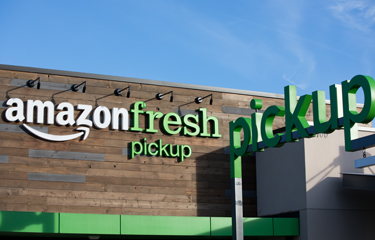Industry news
Consumers flowing to retailers bridging online and offline shopping experience
Datetime:2020-09-24
Soaring e-commerce grocery sales, along with continued strong sales of fresh and frozen seafood sold in traditional retail outlets, are pointing the way forward for U.S. suppliers and distributors.
Despite the loss of much of its foodservice business since the outbreak of the COVID-19 pandemic in March, the seafood industry has been compensated with huge boosts in sales through both online and traditional retail arenas.
Since March, fresh and frozen seafood have seen double-digit sales increases across the country – whether shoppers are purchasing in-store or online. Those jumps have been sustained even as some restaurants begin to reopen on a limited basis. For the week of 6 September, frozen seafood sales outpaced all other frozen categories, soaring 36.2 percent compared to the same week last year, Information Resources Inc. and 210 Analytics reported. Notably, fresh seafood sales for the week of 13 September also surged 34 percent, the firms said.
Grocers’ seafood departments have realized the “biggest increase in demand during COVID-19,” Lou Shaheen, vice president of sales and marketing, at Bellingham, Washington-based Trans-Ocean Products, told SeafoodSource. The refrigerated surimi product supplier has seen sales increases of at least 35 percent compared to last year, Shaheen said.
But seafood suppliers looking toward traditional retail to bolster their sales should take note of another shift in buyer preference caused by the pandemic: a new Mercatus/Incisiv survey found that 30 percent of shoppers changed their preferred shopping destination due to shelter-in-place orders.
According to the survey and corresponding report, “eGrocery’s New Reality: The Pandemic’s Lasting Impact on U.S. Grocery Shopping Behavior,” due to fears over the coronavirus, 60 percent of American consumers moved at least some of their shopping from one brick-and-mortar store to another, and 40 percent shifted to online shopping options. An all-time high of 43 percent of U.S. consumers said they shopped online in the last six months, compared to 24 percent two years ago, the survey found. Sixty-two percent said concern over COVID-19 was the top reason they shifted to online shopping, while 62 percent said they switched for convenience, and 42 percent listed time-saving as their reason.
Mercatus and Incisiv projected online grocery sales reaching an estimated USD 250 billion (EUR 214 billion) by 2025, accounting for 21.5 percent of all grocery sales. But its survey of 60,000 American shoppers across the country also found that while 40 percent of online shoppers are likely or very likely to continue to purchase via online channels, 78 percent of all shoppers still prefer to visit a brick-and-mortar grocery store – either to shop in store or for curbside pickup.
News Source: SeafoodSource

